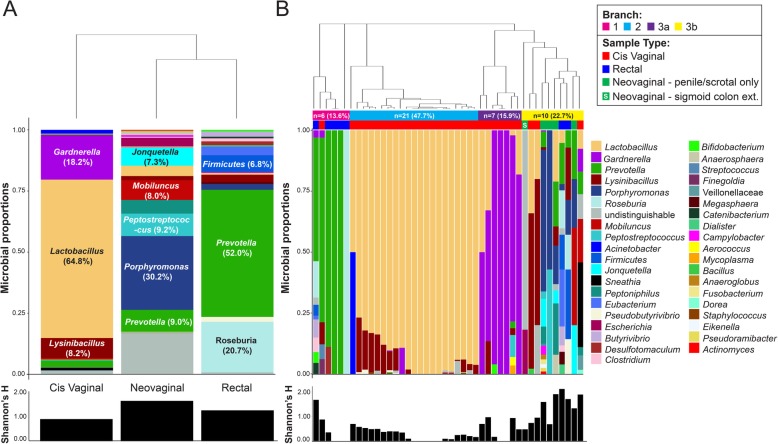Fig. 1.
Microbial profiles determined by mass spectrometry reveal distinct microbial community structures in the neovaginal, rectal, and vaginal compartments from transgender and cisgender women, respectively. a Unsupervised, hierarchical clustering performed on the averaged proportional abundance of the bacterial taxa detected suggests the polymicrobial, neovaginal profile on average is more similar to the rectal profile compared to the cis vaginal profile which is dominated by Lactobacillus and Gardnerella. b Hierarchical clustering of the individual profiles reveals that neovaginal profiles specifically cluster together as well as with other diverse, species-rich cis vaginal and rectal profiles (branch 3b). All of which are significantly more diverse (Shannon H Index, p = 5.0E−4, Kruskal-Wallis) than cis vaginal and rectal profiles found in branches 1, 2, and 3a

